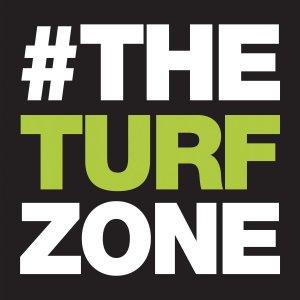The Turf Zone Podcast

Mississippi Turfgrass Association – Better Planning and Execution Through Weather App Adoption
Mississippi Turfgrass – Brad Jakubowski, Instructor in Agronomy, Center for Turfgrass Science
Keeping an eye on the weather is something professional turfgrass managers have ingrained into our systems. Can I mow today? We check our phones for the most recent forecast. Should I spray today? We monitor dewpoints, humidity and temperatures. Will I pull the tarp prior to today’s game? We study the weather radar. There is a tremendous amount of weather information out there and nearly all of us have some form of a weather app on our phones or a link to our favorite weather website to help us make day-to-day management decisions. Let’s take a journey, to see what is out there and what information will help us make the best weather-based decisions possible.
Which app is the best?
Honestly, there is no one best app so it is important to find an app or a number of apps that provide you the most reliable and quickly available information.
Basic Information that is important to have available with the least number of clicks would be:
* High and Low Temperatures (including overnight lows)
* Dewpoint
* Relative Humidity
* Short-Term Weather Forecasts
Intermediate Information includes:
* Radar (Base and Composite Reflectivity)
* Satellite Imagery
* Severe Weather (especially lightning).
Advanced Information would be:
* Echo Tops
* Vertically Integrated Liquid
* Digital Storm Accumulation
* Forecast Discussion
Basic Information
When looking for basic information, it is best to have most or all important data on the first screen or within one or two clicks from the first screen. That is often a good way to judge how well your app will benefit you over time. As an example, The National Weather Service includes much of the basic data (Figure 1). At a glance, you can get a good idea of what is happening now and what will happen in the immediate future. High and low temperatures provide a quick mental image of how the day (and night) may influence your maintenance plans, while winds, dewpoint and relative humidity provide a quick insight on irrigation requirements, disease potential, and infield skin management requirements.
It is beneficial to see both relative humidity and dewpoint together. Viewing only either limits your view of the big picture. For example, a relative humidity of 65% with dewpoints over 70 degrees indicate that less time may be spent watering the infield skin and instead used to scout for diseases. The same relative humidity with dewpoints under 40 may indicate a majority of the day should be dedicated to watering the skin and irrigating.
Intermediate Information
When making game-time decisions such as tarp pulls or field evacuations due to severe weather, radar becomes an important tool. There are numerous good weather radar apps available. Many are free, some require an annual fee of $US 10 to 50. Many of the fee-based apps offer expanded functionality, precision and overall quality of information. Regardless of cost, radar app selection should prioritize the type of reflectivity the radar images are based upon. There are two types, Base Reflectivity and Composite Reflectivity. Each time a radar transmitter spins, it sends out a microwave ‘sweep’ at different elevations to get a complete picture of all atmosphere elevations. A Base Reflectivity image represents only a single sweep of the radar transmitter. This means that near the transmitter the radar ‘sees’ low in the storms and as distance increases the beam rises and can overshoot the core of heavier precipitation. Many High-Resolution (Hi-Res) radar images feature only Base Reflectivity sweeps.
Composite Reflectivity stitches together all elevation scans, in order, to create an image that represents a more complete picture of an incoming storm.






 Visit Podcast Website
Visit Podcast Website RSS Podcast Feed
RSS Podcast Feed Subscribe
Subscribe
 Add to MyCast
Add to MyCast